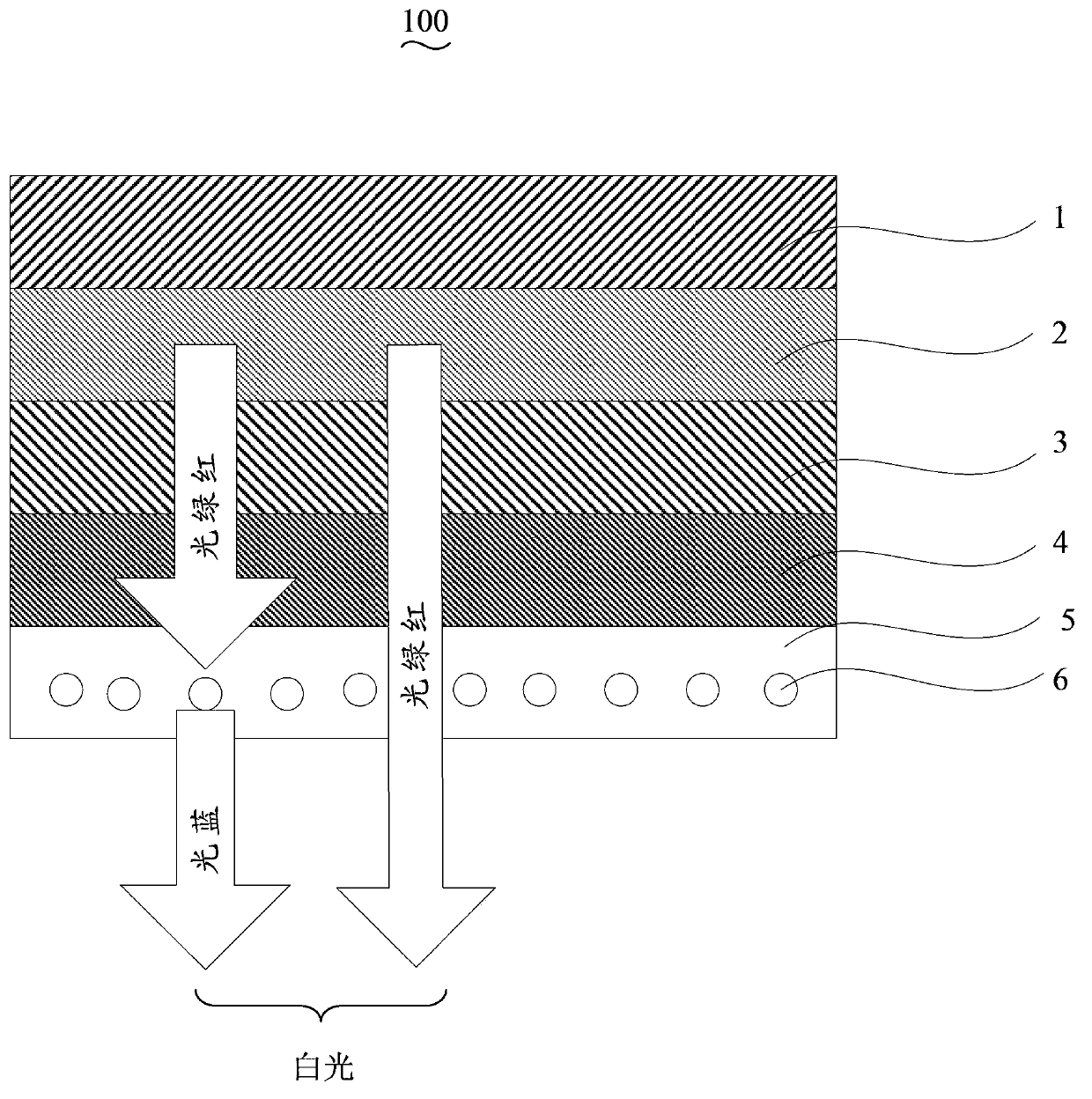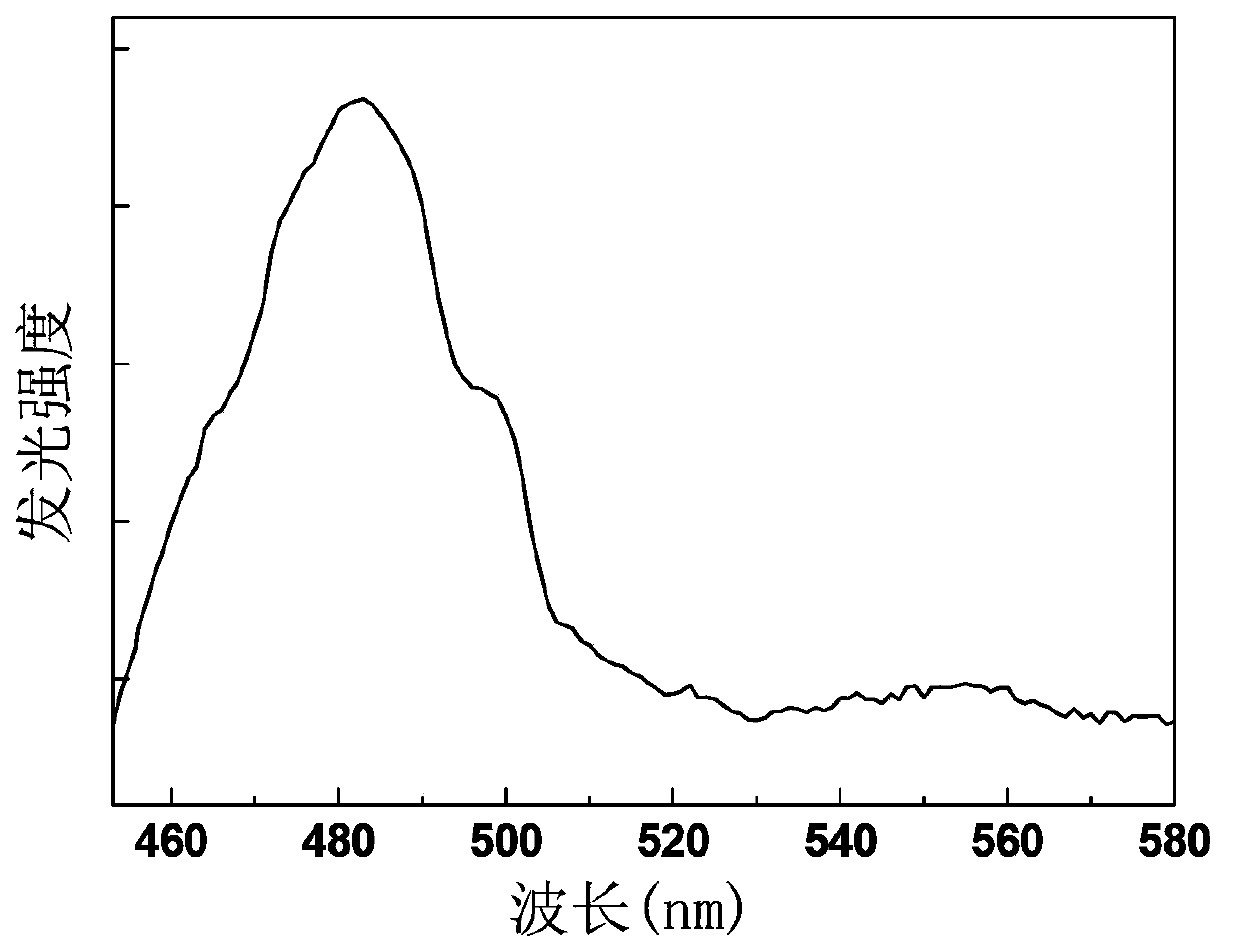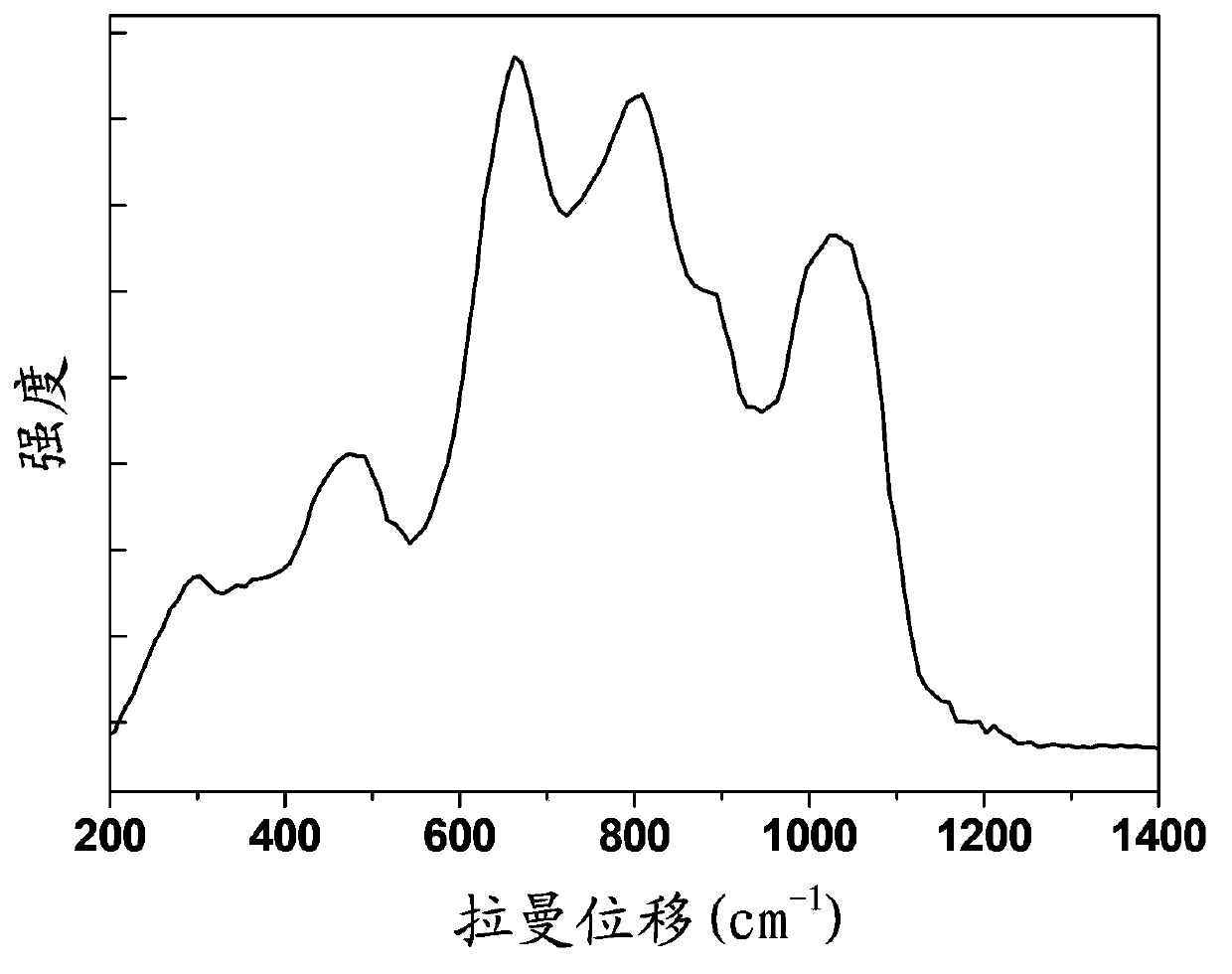Dysprosium doped phosphate tellurite glass upconversion luminescent material, and preparation method and application thereof
A technology of phosphotelluride and luminescent materials, applied in the directions of luminescent materials, chemical instruments and methods, semiconductor/solid-state device manufacturing, etc.
- Summary
- Abstract
- Description
- Claims
- Application Information
AI Technical Summary
Problems solved by technology
Method used
Image
Examples
preparation example Construction
[0028] The preparation method of the dysprosium-doped phosphotellurite glass up-conversion luminescent material comprises the following steps:
[0029] Step S11, according to PbF 2 -TeO 2 –P 2 o 5 :xDy 3+ The stoichiometric ratio of each element is weighed as PbF 2 , TeO 2 , P 2 o 5 and Dy 2 o 3 Powder, wherein, x is 1-5.
[0030] In this step, the PbF 2 , TeO 2 , P 2 o 5 and Dy 2 o 3 The molar ratio of each component of the powder is (10~35):(50~70):(10~15):(1~5).
[0031] In this step, preferably, x is 2.
[0032] Step S13, mixing the powder weighed in step S11 evenly to obtain a precursor.
[0033] In this step, the powder is ground in a corundum bowl for 20 minutes to 60 minutes to obtain a uniformly mixed precursor, preferably for 40 minutes.
[0034] Step S15, burning the precursor at 800° C. to 1100° C. for 0.5 hours to 5 hours,
[0035] Preferably, the precursor is burned at 950° C. for 3 hours.
[0036] Step S17, cooling the precursor treated in s...
Embodiment 1
[0042] The powder with a purity of 99.99% is selected, and the PbF 2 , TeO2 , P 2 o 5 and Dy 2 o 3 The components of the powder are ground in a corundum mortar for 40 minutes in a molar ratio of 25:60:13:2 to make them evenly mixed, then burned in a muffle furnace at 950°C for 3 hours, then cooled to 200°C and kept for 2 hour, and then take it out with the furnace cooling to room temperature to obtain block material, after pulverization, the general chemical formula can be obtained as 25PbF 2 -60TeO 2 –13P 2 o 5 : 2Dy 3+ Up-converting phosphors.
[0043] The process of organic light-emitting diode preparation:
[0044] The sequentially stacked substrate 1 uses soda-lime glass, the cathode 2 uses a metal Ag layer, and the organic light-emitting layer 3 uses Ir(piq)2(acac), the Chinese name is bis(1-phenyl-isoquinoline)(acetylacetonate) iridium (III), the transparent anode 4 uses indium tin oxide ITO, and the transparent encapsulation layer 5 is polytetrafluoroethylene...
Embodiment 2
[0049] The powder with a purity of 99.99% is selected, and the PbF 2 , TeO 2 , P 2 o 5 and Dy 2 o 3 The molar ratio of each component of the powder is 35:50:14:1, grind it in a corundum mortar for 20 minutes to make it evenly mixed, then burn it in a muffle furnace at 800°C for 3 hours, then cool it down to 250°C and keep it warm After 0.5 hours, cool to room temperature with the furnace and take it out to obtain a bulk material, which can be crushed to obtain a chemical formula of 35PbF 2 -50TeO 2 –14P 2 o 5 : Dy 3+ up-converting phosphors.
PUM
 Login to View More
Login to View More Abstract
Description
Claims
Application Information
 Login to View More
Login to View More - R&D
- Intellectual Property
- Life Sciences
- Materials
- Tech Scout
- Unparalleled Data Quality
- Higher Quality Content
- 60% Fewer Hallucinations
Browse by: Latest US Patents, China's latest patents, Technical Efficacy Thesaurus, Application Domain, Technology Topic, Popular Technical Reports.
© 2025 PatSnap. All rights reserved.Legal|Privacy policy|Modern Slavery Act Transparency Statement|Sitemap|About US| Contact US: help@patsnap.com



